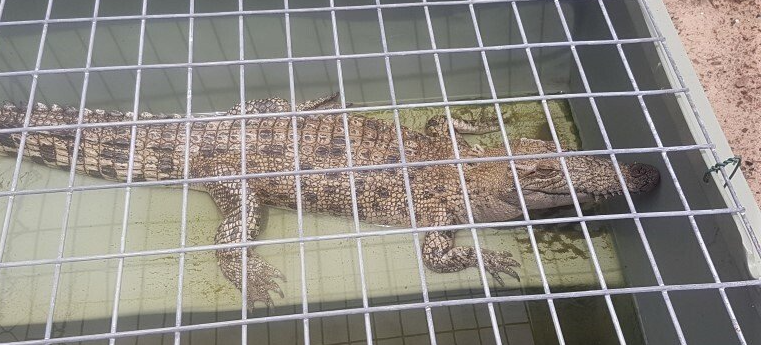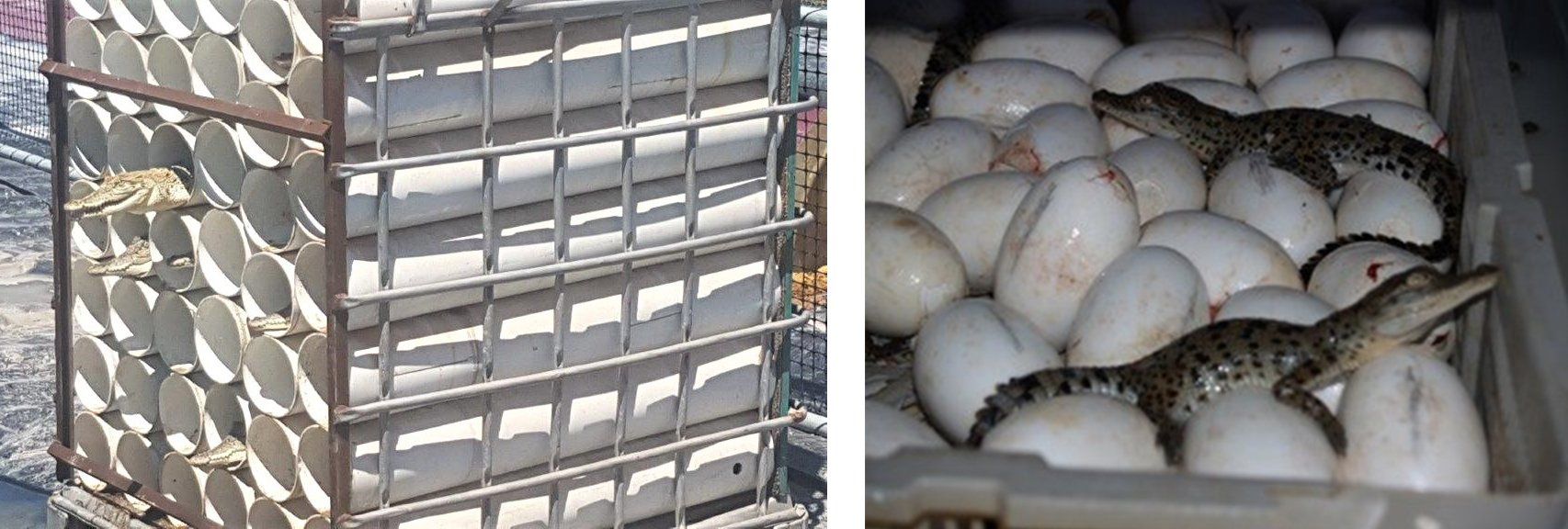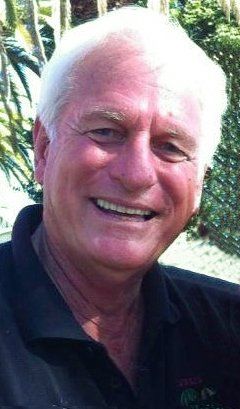1MG FlippingBooks
The Crocodile Conundrum: Where Science, Conservation and Commerce Intersect
John Lever has been catching, nurturing, breeding, showing and selling crocodiles from his Queensland farm for almost 40 years. He has formal training and work experience in science disciplines and is an astute businessman too. Now John is on a mission to promote the economic, scientific and conservational potential of a sustainable and globally competitive national crocodile agribusiness industry.

“It’s not what you’ve got, but what you do with what you’ve got that counts”
BASIC FACTS
- The saltwater crocodile (crocodylus porosus), also known as a “Salty”, is the largest crocodile species in the world.
- Salties are considered the most dangerous crocodile species in the world.
- Salties are evolutionary survivors from prehistoric times.
- Salties have survived an intense hunting period in Australia (1940 – 1970)
- The Salty population recovery since protection has been beyond predictions.
- Salties have a skin with a scale pattern regarded as the best of all crocodilian species.
- Salty skins are in high demand by the international crocodile leather industry.
- Salties are regarded as a natural resource that can be managed.
- Salties are an integral essential part of the natural environment.
- Crocodile meat is a succulent white meat with a delicious and unique flavour. It is low in fat and high in protein and is best cooked in the same manner as fish.
- The salty’s leather is the finest grade of leather among the 27 crocodilian species around the world.
FARMING
The crocodile industry in Australia has gone through many phases in the last 100 years to get where it is today. Following protection and subsequent population recovery, closed cycle farming was permitted in NT (1972) – captive breeders were kept all year round for one month’s activity, to mate and lay eggs. The eggs were incubated, and hatchlings grown out to skinning size and sold legally through the controls of the Convention on International Trade in Endangered Species of Wild Fauna and Flora (CITES) and Territory legislation. The economic viability of such farms was doubtful and many introduced tourism for cash flow to support farm growth. Crocodiles are a must-see icon in the NT. The first commercial farm in Qld was opened in 1981 followed by WA in 1982.
RANCHING
When “croc” populations in the wild increased there was a public outcry about the threat they posed to residents and recreation users of the waterways. This is still echoed today. The conundrum was that closed cycle farms could not produce sufficient skins to satisfy industry demand; the croc population was increasing rapidly but the wild resource of crocs was protected and could not be used. A strategy of “conservation through commerce” was introduced (1983). Eggs could be removed from wild nests and processed through farms. This process is compliant with CITES. The initial harvests were conservative but ongoing research showed that egg removal had no effect on the status of wild populations. Egg quotas went from 10,000 in 1983 To 100,000 today and Australian skin exports grew fast and husbandry techniques were researched and improved. Policy changes have been evidence based. Only the NT permits eggs to be removed from wild nests; QLD and WA do not.
CONSERVATION
Most people only want to conserve the things they love, only love the things they understand, and only understand those things they're prepared to share time and space with. (Paraphrased from a famous quote by Baba Dioum, a Senegalese forestry engineer from the mid-20th century)
Crocodile conservationists are divided on strategy but the strong evidence that placing a dollar value on crocodiles and utilising the most expendable part of the population only (eggs) is a proven one making the landowners the key beneficiaries.
Those who think that crocodiles should not be utilised at all and want the industry closed have not offered an alternative workable strategy that recognises the value of the crocodile resource nor the potential danger to remote communities, regional urban communities, and recreational users within crocodile ranges.
It is easy to be a crocodile protectionist living in Melbourne or Sydney because you are not affected by their presence or exposed to the danger.
THE FUTURE
By placing a value on crocodile eggs there is a real incentive for landowners to maintain viable breeding populations of crocs. The egg resource is largely owned by indigenous landowners.
The skin export industry returns funds to farmers who are dependent on eggs from the wild. This dependency results in shared dividends.
“Conservation and commercial strategies working hand in hand”
No industry should be complacent or satisfied with the status quo. Any industry that does not build changes into its operation will fail in time. Research is currently being conducted on the parts of the crocodile that can be used for human wellbeing including:
- CSIRO has researched the antiarthritic and anti-carcinogenic properties of crocodile cartilage.
- Central Queensland University is researching nutraceutical and biomedical uses for crocodile cartilage.
- Latrobe University is researching crocodile blood immunity characteristics for possible development for human medicinal use.
- University of Queensland is conducting research into artificial insemination of crocodiles.
Crocodile populations in QLD and WA need to be managed and the cost of this is borne by taxpayers in those states. Like the NT, numbers are increasing but there are no industry revenues to offset the costs of management and it remains a taxpayer burden.
Suitable crocodile habitat spans coastal Northern Australia, but the three government entities have separate legislations for crocodile conservation and management. Man-made boundaries are not recognised by crocodiles and some sort of collaboration to have a uniform regularity approach to management and conservation needs to be initiated.
OPPORTUNITIES
Australia is privileged to have this species and is duty bound to use it wisely as a renewable resource. With wild populations nearing pristine levels, a strategy embracing conservation, sustainability and utilisation, research and value adding, as well as a common overarching policy, could lead to steady growth for the next 2 decades and beyond.
For crocodile farming to be financially viable, farmers must have access to eggs, water and be close to a substantial food supply.
Infrastructure can be built around these essentials. Opportunities exist in areas that have bore water that has a temperature range over 30 Degrees Celsius. For the visionaries, places like Moree in NSW and Lorne in Victoria have an opportunity to establish grow out facilities as their bore water exceeds the essential temperatures for cold blooded crocodiles.
The future shift could see crocodiles not just grown for their skins and meat but also blood, bones, and cartilage to develop and value add into saleable products.
Editor’s Note: Crocodile farming is a niche agricultural discipline. It shares many universally relevant farming principles and practices that may be of interest to a wider farmer audience. 1MG commissioned this uniquely fascinating story that demonstrates that by merging science, innovation, technology, commerce (including agri-tourism), entrepreneurism and social responsibility, new industries can be pioneered. The lever family have done just that producing new agribusiness commodities : crocodile meat, skin, and leather products.
John Lever is the owner of Koorana Crocodile Farm, QLD’s first commercial crocodile farm – established in 1981, which is located in Central QLD. Early in his career he worked at CSIRSO and later wrote and managed the National Crocodile Programme in Papua New Guinea. He has a diploma in agriculture from Dookie Agricultural College and is currently an Advisory panel member for emerging industries at AgriFutures Australia.


















